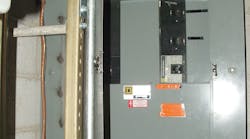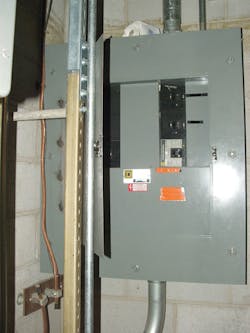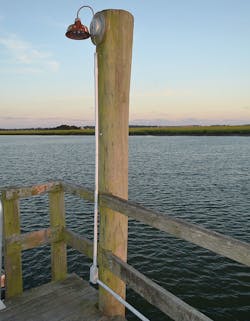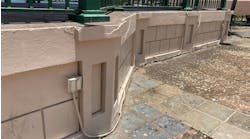How well do you know the Code? Think you can spot violations the original installer either ignored or couldn’t identify? Here’s your chance to moonlight as an electrical inspector and second-guess someone else’s work from the safety of your living room or office. Can you identify the specific Code violation(s) in this photo? Note: Submitted comments must include specific references from the 2017 NEC.
Hint: I’m not a member of this fan club.
January Winners
Our only winner this month was Brian Laflamme, assistant code officer for the City of Biddeford, Maine. He was able to correctly identify some of the NEC violations depicted in this photo.
Looking closely, you may notice that there is only one clip for this vertical PVC conduit run, and it’s broken. The lack of a secure supporting means has caused the conduit to slip down and out of the luminaire mounted at the top of the post. This resulted in the individual conductors being exposed. According to Sec. 352.30, ¾-in. PVC is required to be secured within 3 ft of each conduit termination and supported again every 3 ft. The exposed conductors are a violation of Sec. 300.3(A), since they are no longer installed in a Chapter 3 wiring method as required. It also appears as though there is no box installed for the luminaire. The installer simply secured the fixture canopy directly to a piece of plywood screwed to the wooden post. Not installing a box for the conductor splices is a violation of Sec. 300.15.






